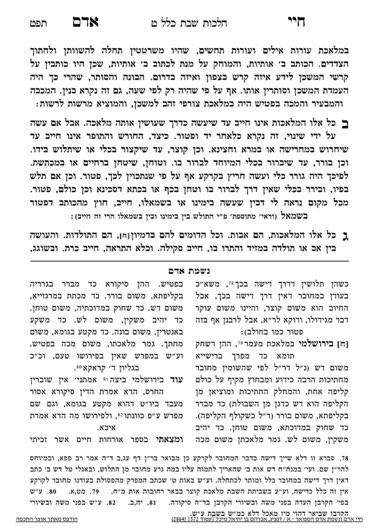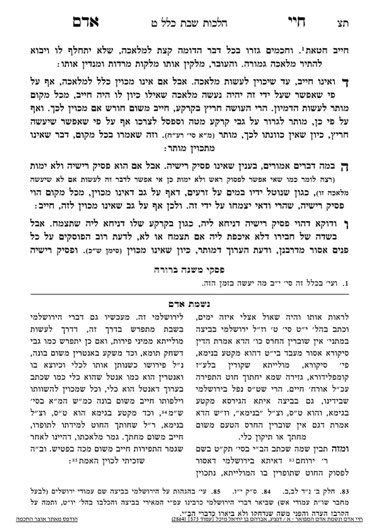We are continuing siman 3. We have learned about avos and toldos, both of which are deoraysa. The Chayei Adam writes that there are also actions which are not toldos, per se, but which people will perceive as parallel enough to an av to be similar to it, and if they are allowed to perform the permitted action, they will come to transgress the av itself. Therefore, Chazal felt a need to make a gezeira to avoid transgressing the av itself. These are known as issurei derabanan. One who transgresses an issur derabanan is liable to makos mardus, which are lashes administered by bais din, and one is liable to be placed in cherem as well.
There are a few categories of issurei derabanan.
- We learned about meleches machsheves (S260), and learned that there are three components to consider an action as meleches machsheves. Many actions which miss one or two criteria are still fairly similar to meleches machsheves, and therefore are assur miderabanan.
- Another category is even when an action is not lacking a component of meleches machsheves, it is still assur miderabanan because it is similar to the melacha, as we learned above. For example, one of the avos melacha is tzod, trapping. The av melacha is a person taking control and asserting dominion over an animal, which includes trapping an animal in a contained area and accessing the animal. If, in order to access the animal, one would need to open the contained area to the point that the animal could escape, it is not considered trapped, because practically, you do not have dominion over the item. It will, however, be assur miderabanan.
- Additionally, the primary purpose of trapping is to use the animal. If a person traps an animal which is not used (ain bemino nitzod), it is not part of the melacha deoraysa. Nevertheless, because it looks like tzod, people will be confused. If one, for example, is allowed to trap a mosquito (because it is ain bemino nitzod), one will eventually think they can trap a beaver, which is bemino nitzod and which is assur deoraysa. Therefore, Chazal instituted an issur derabanan.
- In addition to avos and toldos, there are issurei derabanan instituted by Chazal. There are different types of issurei derabanan.
- One type is where an action is missing a component of meleches machsheves,
- and another is when the action is simply too similar to an av, so Chazal prohibited it out of concern that one would confuse it with the av and eventually transgress the av as well.




